Life is Brutal!
Survival for wildlife can be very difficult. Even though plants and animals have special...

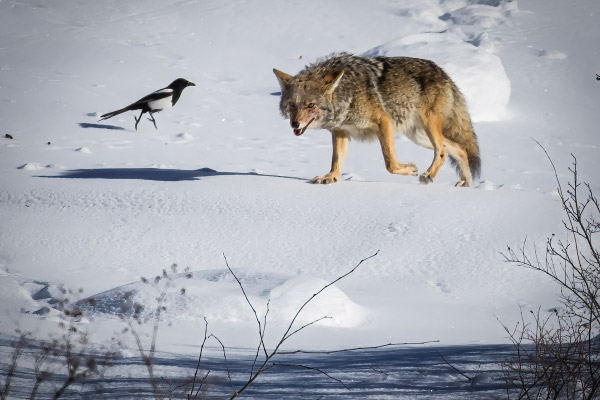
There is no bad weather in Colorado. It is just a bad choice of clothing! For humans we have learned how to deal with a variety of weather conditions. We use wool, fleece, and all kinds of insulation in our clothing to keep the cold at bay. In recent years we have added chemical heat packs for gloves and boots. There are also electric vests, gloves, socks, and boots. We still enjoy most days outside. Skiing, snowshoeing, hiking, bike riding, skating, and fishing are all things that we enjoy in winter weather. We can do that because we have options, and we can always bail out and go home when things get really tough.
This moose has long legs, an adaptation that helps them survive areas with significant snow depth.
My boys were in a Boy Scout Troop that camped every month of the year. One 2-night trip on the back side of Pikes Peak was rugged. The high temperature was 14° and the low was -15°. When we got home the question was “Where is our next trip? The only complaint was when they got the 0° patch. They wanted it to be a -15° patch! How did we survive those trips? The good old Boy Scout motto “Be Prepared!”
Wildlife does not have all the options we have. Whatever the weather they are experiencing is what they must work with. In addition, all animals need food, water, and shelter for survival. During the winter that becomes much more difficult for wildlife.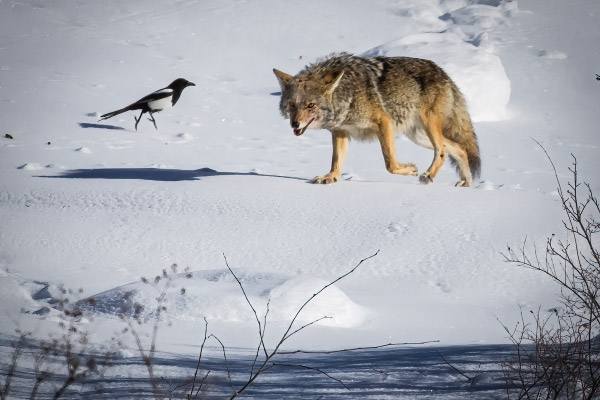
Coyotes and other scavengers may do better in winter months than the rest of the year because of other animals that
do not survive due to deep snow and lack of food.
How do they survive?
Animals can move to some kind of shelter when things get bad. Some animals can move into the burrows they dig, cavities in trees and logs, caves, behind rocks and outcrops to escape cold temperatures or wind. Others may seek cover in forests or under trees.
Some animals dramatically decrease their activity, they enter a state call torpor. Torpor occurs when the physiological activity in an animal decreases for short periods of time. This usually includes a drop in body temperature and a reduction of their metabolic rate. Torpor usually refers to a period of decreased temperature and metabolism that lasts for 24 hours or less.
Birds including hummingbirds, some rodents, and bats will enter torpor during the night to conserve energy. This can create a situation where the animal is exposed to predators and cannot detect them and cannot flee.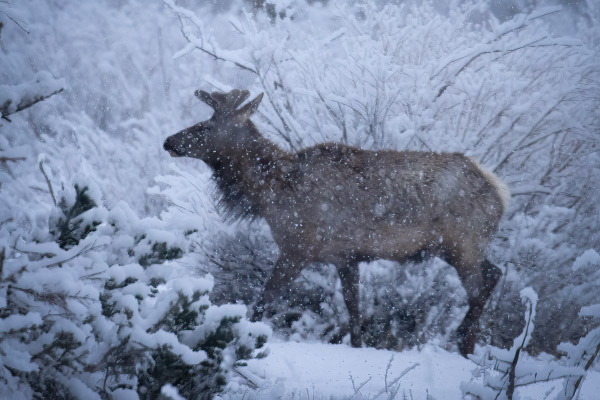
When the snows fall, deer, elk, and moose migrate to lower valleys to find food. The flatter terrain allows them to move about and expend less energy.
Some animals are like some part-time folks here, they leave town. Migration occurs when animals move to a different environment to escape bad environmental conditions or to find better food availability. Migration is cyclical, usually happening on a seasonal basis.
In our environment winter causes a significant drop in available food. Plants dry up and may be buried under snow. The cold kills off insects. Some birds head south to find better food resources. For some birds this is the winter stop. Raptors like rough legged hawks and some geese and swans move from the far North to our area for the winter.
This behavior may be triggered by photoperiodism, which is the response of an organism to seasonal changes in day length. Weather conditions and changes in food supplies may also stimulate animals to migrate.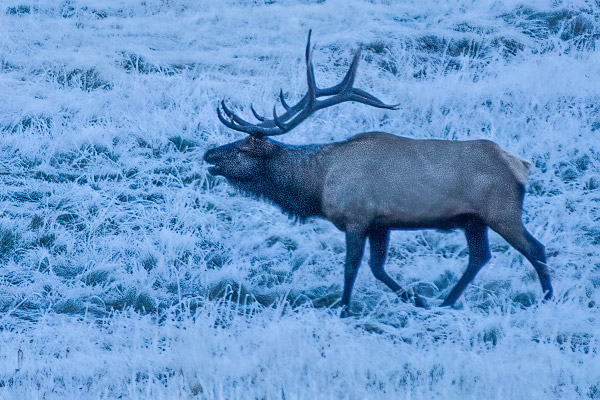
A bacteria filled stomach generates heat as digestion occurs. That built-in “furnace” can help many animals like this elk
survive cold weather. Heavy fur insulates this elk so well that the frost has not melted on its back.
Animals that migrate include mammals, birds, fish, and insects. Some species travel thousands of miles from North to South. Birds are well known for this and so are some species of butterflies. Other species like some ungulates will move from higher elevations to lower elevations or to areas that see less winter snow. Migration impacts the food sources in the winter habitat as well as predatory behavior of the resident predators. It can also transport diseases.
Some animals check out all together, they hibernate. Hibernation is a prolonged version of torpor. Hibernation is characterized by the lowering of body-temperature, slowed breathing and heart rate, and a much lower metabolic rate. Hibernation is most common in winter months.
We often think of it as a deep sleep. Hibernation functions to conserve energy when food supplies are reduced or are not available. It may be for just a few days or extend to many months. It is common with many rodents. Bears however, don't have the same drop of body-temperature, slowed breathing and heart rate, or lower metabolic rate. They may awaken during the winter and leave their dens.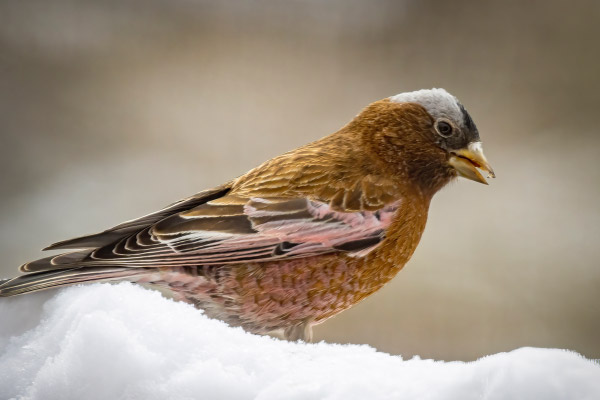
Feeding birds in winter can help them survive and improve their breeding success in the spring. They may also allow you to see
some species that are not very common in our area, like this Grey-crowned rosy finch.
A good example of a hibernator is the yellow-bellied marmot. They live in high elevations where swings in temperature and snowpack are extreme. They survive by hibernating for as much as half their lives. They pack on the food during the summer and dramatically increase their body weight. In September they enter their dens and stay in hibernation until April or May.
The body temperature of a marmot will drop to as low as 41 degrees Fahrenheit. Their heart rate drops from around 190 beats per minute to as low as 30 beats per minute. They may only take a breath every minute. These physiological changes allow them to survive winter and reproduce each spring.
Animals that stay here and do not hibernate have adaptations to help them survive. They need to build a good fat reserve, they develop a thicker winter fur, they have arteries and veins in their legs that are close together to exchange heat. Blood traveling to the toes warms the blood flowing back to the body. That reduces heat loss.
There are many other adaptations that help animals survive the winter. Ungulates have multiple stomachs. Bacteria in one of the stomachs helps to digest the food the animal eats. That process generates heat. Blood vessels around that stomach help to move the heat around the body.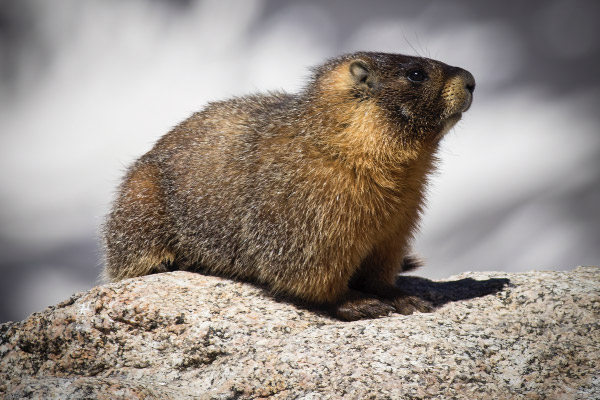
Marmots survive winter by entering their burrows in the fall and sleeping through the entire winter months.
What can you do to help ensure wildlife survival in the winter?
Feeding birds with high fat seeds in winter months helps them survive. Do some research on what food the birds that visit your yard need. Buy seeds that are high in those food sources. Putting out feeders from March through the end of November can cause problems because they can attract bears. Studies have shown that feeding birds in the winter improves their breeding success. Those birds produce more eggs, and their chicks weigh more. In harsh winters this can help birds that are facing other extreme challenges.
Climate change is having an impact on food sources and is disrupting seasonal changes. Migrating animals arrive at a location and the seeds, plants, or animals they depend on for food are ahead or behind their normal life phases and these animals cannot find the foods they need for survival. Do all you can to help reduce climate change.
Land that is developed will be habitat that is lost forever. When wildlife stops using some of their historic ranges that may doom them. These animals may not have the option of going somewhere else and that will cause their death. Those animals may be lost forever. Work with local land use people to help reduce habitat loss that is critical for different species at different times of the year.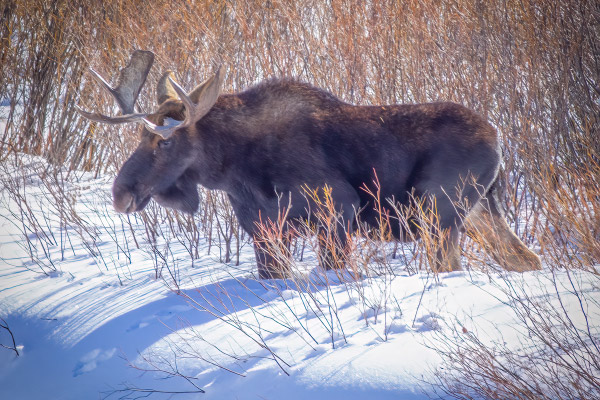
The long legs of moose help this animal survive in the winter.
It is illegal in Colorado to intentionally place or distribute feed, salt blocks or other attractants for big-game animals. This causes those animals to concentrate in a small area. That may increase stress on the deer and spread disease. These animals are more likely to be chased by dogs and hit by cars. They are more likely to damage plants in your yard and your neighbors. This concentration may also attract mountain lions. Supplementing ungulate diets with grain, corn, apples, or hay may not be good for them. It may not contain the nutrients the animals need, or the animals may not be able to properly digest the food provided. This could cause them to die on a full stomach. Do not provide food for deer and other large mammals.
During the winter, wildlife needs to spend a lot more time trying to find the foods they need to survive. If these animals alert you to your presence, they are not eating. An excessive amount of disturbance may cause them to starve. Anyone who travels into the backcountry on skis, snowshoes, or snow machines should be aware of this fact.
In addition to the backcountry, there are many areas in the county, like golf courses, that people are using for cross-country skiing, snowshoeing, and winter bike riding. People are beginning to use these at night during full moons and even with high powered lights. Some of these areas like the golf courses in Eagle are used by the elk at night to rest or feed. Some herds come down at dusk, get water, rest up, and then head back up the valley in the morning. Others stick around throughout the day in the wetland areas. These are the historic areas used by elk before humans arrived in the valley. Fencing in and near these areas can restrict the routes elk use to move and that increases the number of calories they burn following indirect routes or jumping over the fences that block their way.
The bikers riding after dark may risk their own safety if their presence disturbs the elk to the point where they stampede. When the elk don't run off, the disturbance isn't good when they're trying to conserve calories to survive the winter. For any cow elk that is pregnant, conserving fat reserves to last the winter is important so that they have the nutrition necessary to nurse their young in the spring.
This Rough-legged hawk will breed in the summer in the arctic. In winter they migrate south to open fields, prairies, and deserts in the U.S.
They are one of the most common winter hawks in Eagle County.
If you encounter wildlife as you travel, day or night, do all you can to avoid any disturbance to the normal behavior of the animals.
Winter weather is something that wildlife adapted to long before humans entered the scene. Humans are changing that environment. We need to do all we can to mitigate those problems.
Rick Spitzer is the author of the article and official photographer for Eagle County Community Wildlife Roundtable.

Rick Spitzer is the author of the article and official photographer for Eagle County Community Wildlife Roundtable.
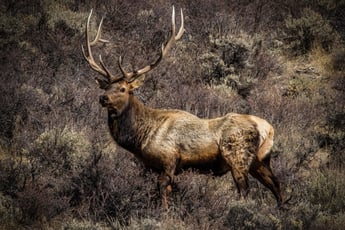

Survival for wildlife can be very difficult. Even though plants and animals have special...


Ecosystems are biological communities which consist of many organisms interacting in a specific...